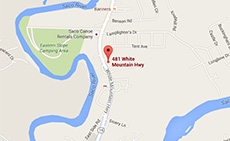The Home Office Deduction
If you regularly use your home to conduct business, you may be eligible for the home office deduction. Contrary to what some people may think, the home office deduction does not set off red flags with the IRS or make an individual more prone to being audited. This deduction allows a taxpayer to deduct home related expenses based on the amount of area in the home that is dedicated to operating a business. These expenses include mortgage interest or rent, real estate taxes, utilities, maintenance costs, home owners or renters insurance, and maintenance expenses. Other types of expenses including alarm systems and casualty losses can be deducted as well. Depreciation of your home is allowed based on the business use.
In order to qualify for the deduction the space in the home or apartment must be used both exclusively and regularly for conducting a trade or business. In essence this means the space cannot be comingled with nonbusiness personal use. However, two or more separate business activities can be conducted in the space and all qualify for the deduction. For example, an architect or lawyer regularly meeting clients in their home and conducting other aspects of their job would qualify for the deduction. The deduction is most often used by self-employed individuals, but employees can claim the deduction if they regularly work from home as a convenience to their employer, though there are other limitations that many times makes the employee’s home office deduction meaningless.
There are two methods used to calculate the amount of allowable deduction. The first method uses actual expenses and the business use percentage to calculate the deduction. The percentage is based on the amount of square footage used in the home. For example, if the total area of the home is 2000 square feet and the area used exclusively for business is 300 square feet, the business use percentage is 15%. The total amount of the deduction will be 15% of the allowable expenses mentioned above. Under this method, the portion of the home related expenses used for the home office deduction cannot also be used as part of the itemized deductions on Schedule A. Itemized deductions such as property taxes and mortgage interest should be reduced by the amount claimed as home office use. It should be noted that the home office deduction reduces both the taxpayer’s income tax and self-employment tax while itemized deductions only reduce the taxpayer’s income tax.
The second method was introduced in 2013 and is called the simplified method. This method allows a $5 per square foot deduction up to 300 square feet without the need to track and maintain a record of actual expenses. The total amount that can be claimed as a deduction is $1500. While the actual expense method may create a larger deduction in some cases, the simplified method lessens the recordkeeping burden and there is no reduction to the Schedule A deductions. The two methods can be interchanged so that a taxpayer can choose to use the actual expenses method in one year and use the simplified method the next.
Using the home office deduction can help offset personal expenses needed to operate your business. If the home office deduction seems like something that might benefit your specific tax situation, please contact your trusted financial or tax advisor to discuss your options.
Michelle is a Staff Accountant at Gamwell, Caputo, Kelsch & Co., PLLC in Conway, NH and can be reached at 603-447-3356. Michelle welcomes any article feedback or questions for future article consideration.


